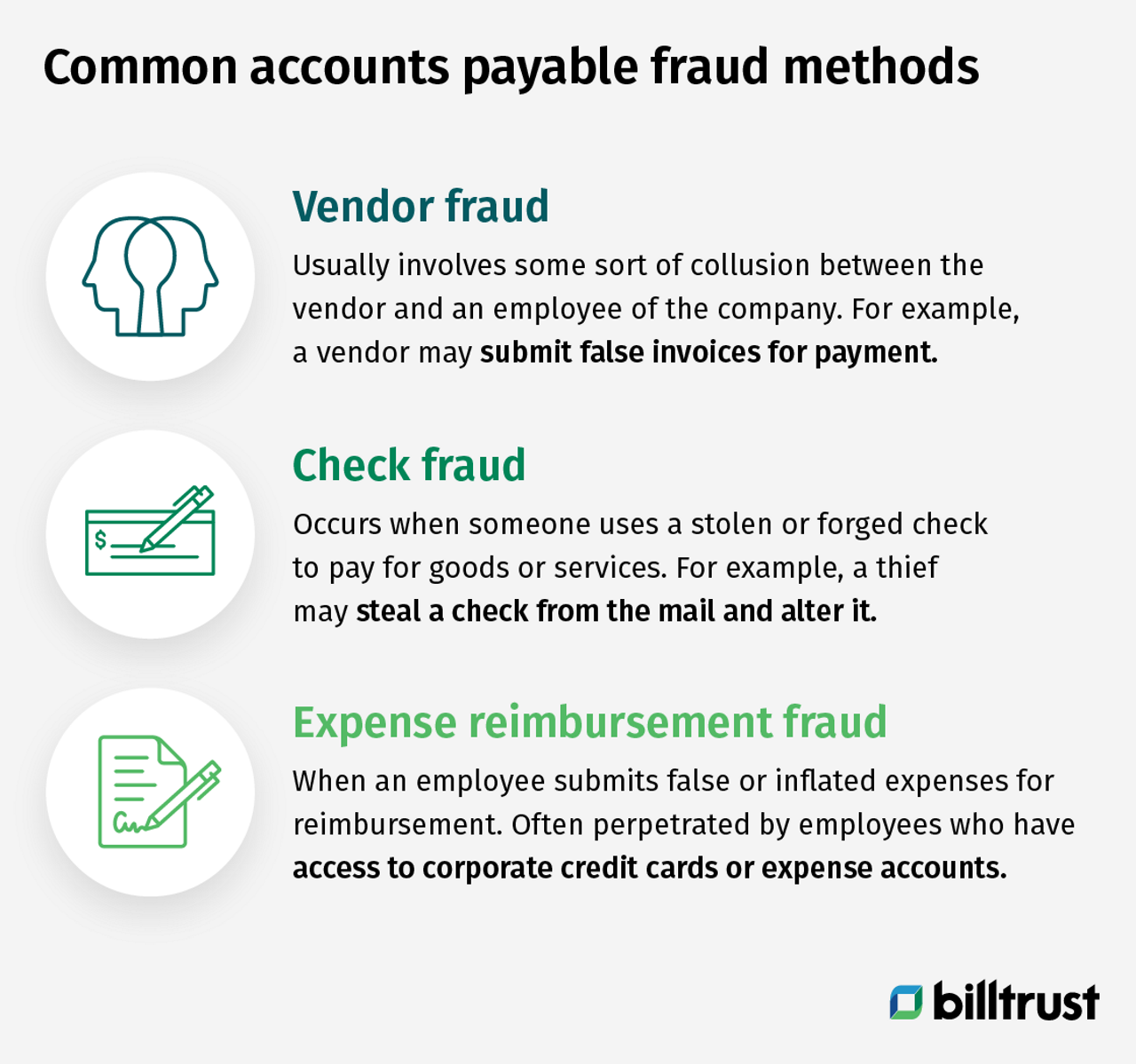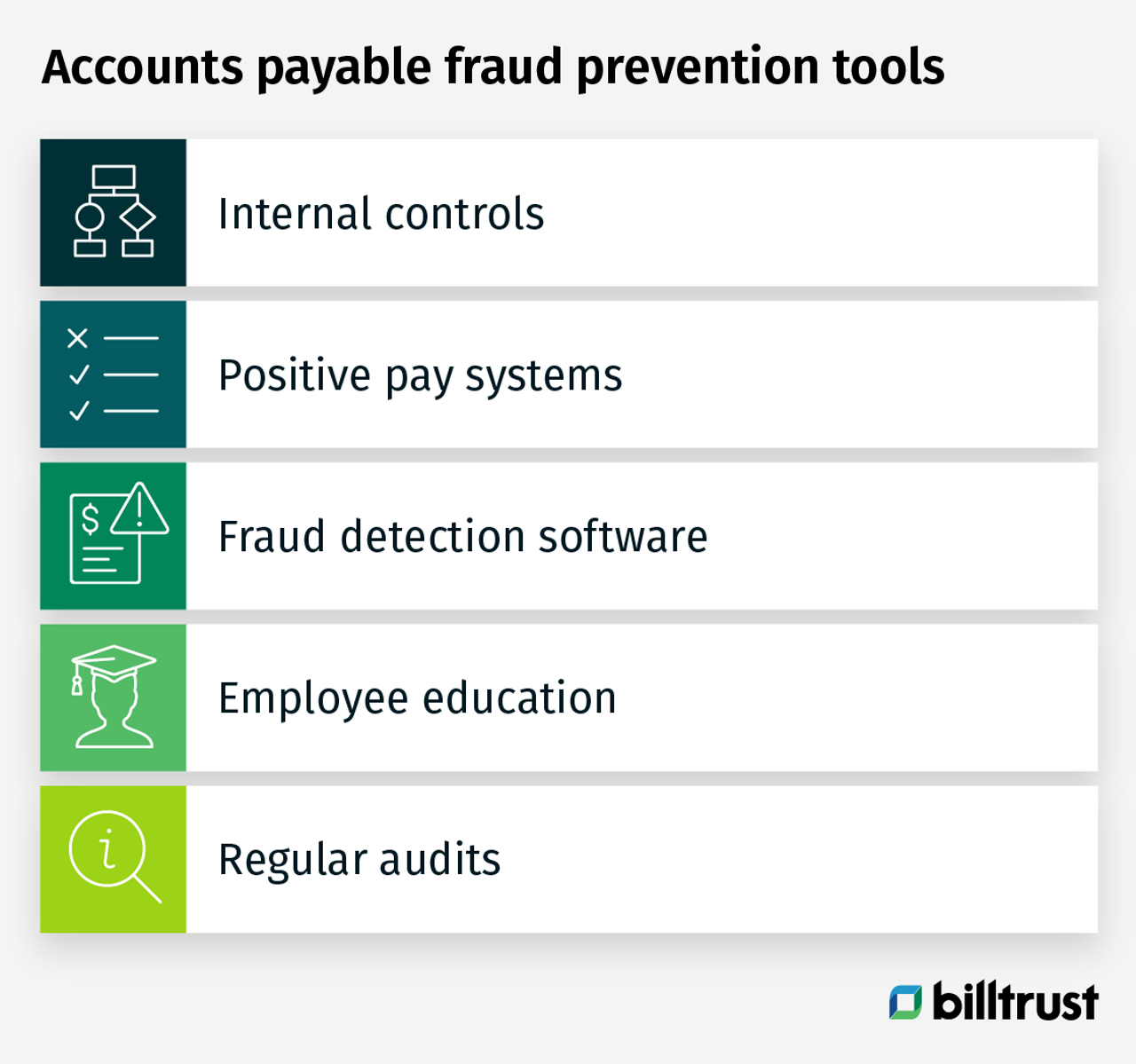Navigating the web of accounts payable fraud can be a daunting task.
Organizations lose an estimated 5% of annual revenue to fraud, with accounts payable (AP) fraud accounting for a significant portion of these losses. AP fraud can take many forms, from fraudulent invoices and check tampering to kickbacks and bribery. Given the complex nature of the AP process, it can be challenging to detect and prevent fraud.
There are several steps organizations can take to navigate the web of AP fraud. These include: understanding the types of AP fraud, knowing the red flags, implementing controls to prevent and detect payables fraud and more.
Read on to learn more about how you can navigate the web of AP fraud. Spot the signs and safeguard your company from unnecessary wrongdoing.

What is accounts payable fraud?
Accounts payable fraud occurs when a company pays for goods or services never received. This type of fraud can be perpetrated in several ways but usually involves some sort of collusion between the vendor and an employee of the company. For example, a vendor may submit false invoices for payment, or an employee may approve payment for goods or services that were never delivered.
What are the three most common types of accounts payable fraud?
There are many types of fraud, and each has its red flags. However, there are some commonalities among the most common type of schemes. The following is an overview of the three most common types of accounts payable fraud:
Vendor fraud
Vendor fraud happens in several ways but usually involves some sort of collusion between the vendor and an employee of the company. For example, a vendor may submit false invoices for payment, or an employee may approve B2B payments for goods or services that were never delivered.
Check fraud
Check fraud occurs when someone uses a stolen or forged check to pay for goods or services. This type of fraud can be challenging to detect because the company's internal controls may miss the check. For example, a thief may steal a check from the mail and alter the check before depositing it into their bank account.
Expense reimbursement fraud
Expense reimbursement fraud occurs when an employee submits false or inflated expenses for reimbursement. This type of fraud occurs when employees have access to corporate credit cards or expense accounts. For example, an employee may submit a false receipt for reimbursement or charge personal expenses to a corporate credit card.

How could accounts payable fraud be committed?
There are several ways accounts payable fraud could be committed. For example, an employee could create false invoices and submit them for payment or alter legitimate invoices and increase the amount owed. They could also make payments to fictitious vendors or use company funds to pay personal expenses. If any of these fraud schemes occur, it can significantly impact your business's bottom line and cause financial losses.
Accounts payable fraud can be challenging to detect, but there are some red flags that businesses should be aware of. For example, if you notice an increase in the number of processed invoices or payment processing to new or unfamiliar vendors, this could indicate something nefarious. It’s critical to have controls to prevent and deter fraud, such as requiring approval for all invoices over a certain dollar amount and conducting regular audits of the accounts payable process.
The payables fraud happens in business
- Creating false invoices: This type of fraud occurs when a vendor creates an incorrect invoice for payment. This could include unexplained or unusual vendor invoices, inflated invoices, duplicate invoices or missing documentation for invoices. In addition, the vendor may collude with an employee of the company to have the invoice approved for payment.
- Check tampering: This type of fraud occurs when someone alters a check that the company has issued. Changes include increasing the payment amount or changing the payee.
- Kickbacks and bribery: This type of fraud occurs when a vendor offers a kickback or bribe to an employee to approve payments on invoices.
- Expense reimbursement fraud: This type of fraud occurs when an employee submits false or inflated expenses for reimbursement.
- Ghost employees: This type of fraud involves approved payments to fictitious employees.
- Late payments to vendors: Late payments to vendors can be a sign that the company is having cash flow issues.
- Unusual payment patterns (e.g., round-dollar amounts, frequent payments to the same vendor): Unusual vendor payments may indicate that something is being paid for that should not be. For example, unapproved or unusually large expenses:
- Changes in vendors or supplier bank account information: Changes in vendor or supplier bank account information can signify accounts payable fraud cover-up as funds are redirected elsewhere.
- Employees resistant to changes in accounts payable procedures: Resistance to changes in accounts payable procedures, particularly those that complicate or eliminate how employees could commit fraud, could signal that someone is trying to protect a scheme.
- Team members bypassing internal controls: Team members who bypass internal controls or override them altogether may be doing so to commit fraud.
- Employees with excessive authority over accounts payable processes: Employees with excessive authority over accounts payable processes may have more opportunities to commit fraud.
The bottom line?
It’s crucial to be aware of these red flags to catch any potential cases of accounts payable fraud. By being proactive and looking out for these warning signs, you can help to prevent your organization from becoming a victim of this type of crime.

How to detect and prevent various types of AP fraud
It is critical to be aware of fraudsters' various methods to commit accounts payable fraud. By understanding how these scams work, you can take steps to protect your organization from becoming a victim.
Detection and prevention of accounts payable fraud require a proactive approach:
- First, companies should implement internal controls to ensure that payments are made only for goods or services received.
- In addition, companies should consider implementing fraud detection software and positive pay systems to help prevent and detect check fraud.
- Consider using automation software to make tracking and accounting for fraud easier. For instance, you can avoid duplicate invoices and duplicate payments.
- Finally, companies should educate their employees on detecting and reporting fraudulent activity.
Some standard accounts payable prevention measures include:
- Implementing internal controls: Internal controls help ensure that payments occur for received goods or services.
- Implementing positive pay systems: Positive pay systems help prevent check fraud by matching the checks presented for payment against a database of authorized checks.
- Implementing fraud detection software: Fraud detection software helps identify suspicious activity, such as duplicate invoices or invoices with missing information.
- Educating employees: Employees should have instructions on how to detect and report fraudulent activity.
- Conducting regular audits: Regular audits help identify areas of weakness that fraudsters could exploit.

To help prevent false billing scams, organizations should require vendors to provide proof of delivery before approving invoices for payment. Organizations should also have procedures in place for verifying the accuracy of invoices. Finally, employees should receive guidance on how to look for red flags that indicate fraudulent activity, such as unexpected invoices from new vendors.
By taking steps to prevent accounts payable fraud, organizations can protect themselves from becoming victims of this type of crime.
What to do if you've fallen victim to accounts payable fraud
If you believe you're the victim of accounts payable fraud, you can take a few steps to help mitigate the damages and protect yourself going forward:
- First and foremost, it is essential to report the fraud to your local law enforcement agency. If you suspect that accounts payable fraud is occurring, it is crucial to report it immediately.
- Report suspected fraud to your company's compliance department.
- You should also alert your bank or financial institution so that they can be on the lookout for any suspicious activity on your account.
- Finally, you will want to take measures to prevent this type of fraud from happening again in the future.
Accounts payable fraud can be devastating, both financially and emotionally. But by taking quick and decisive action, you can help minimize the damage and focus on your organization’s success.
Download the ultimate guide to digital accounts receivable


